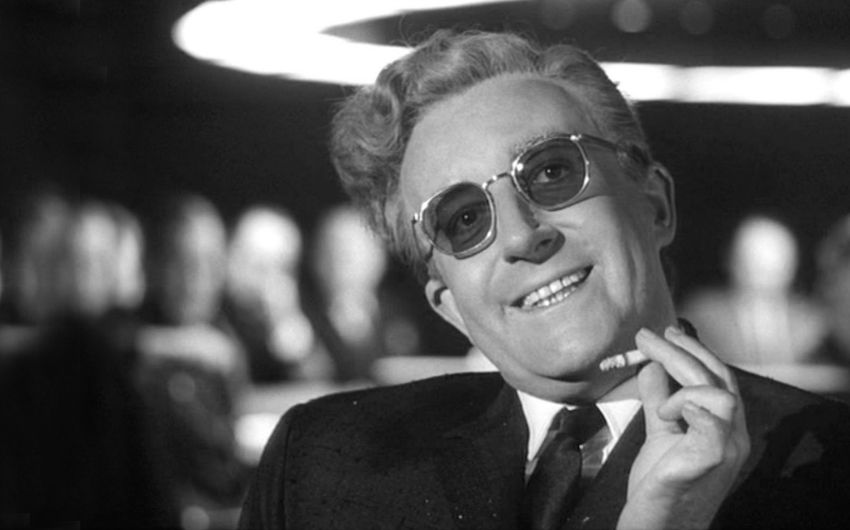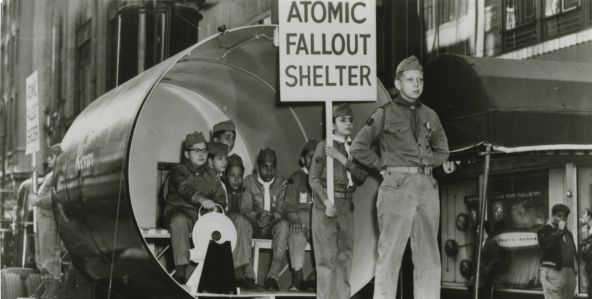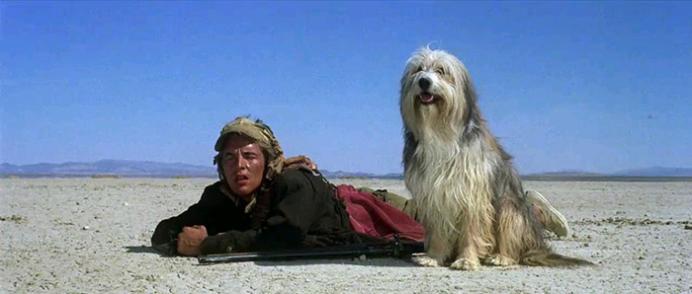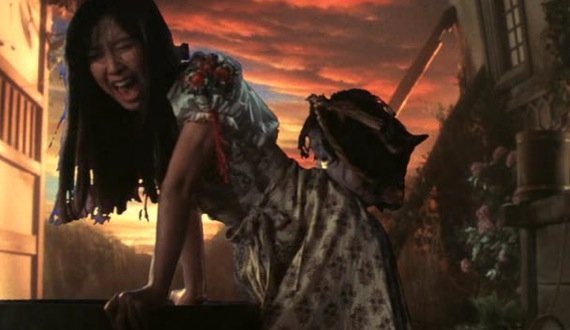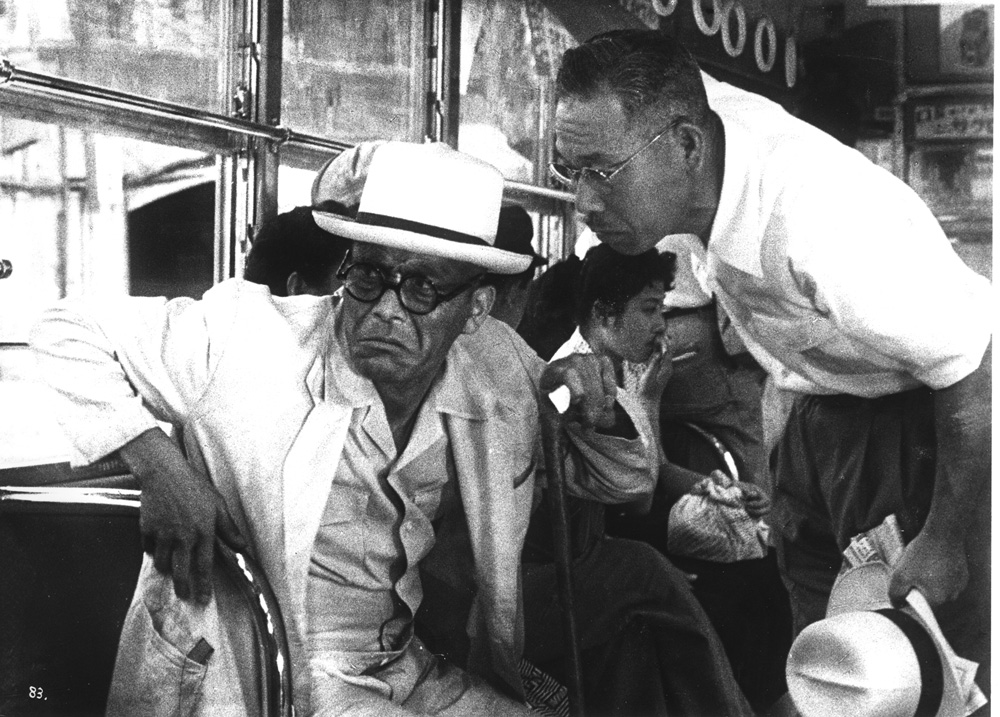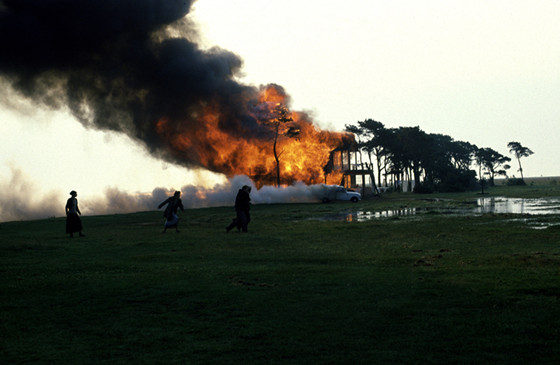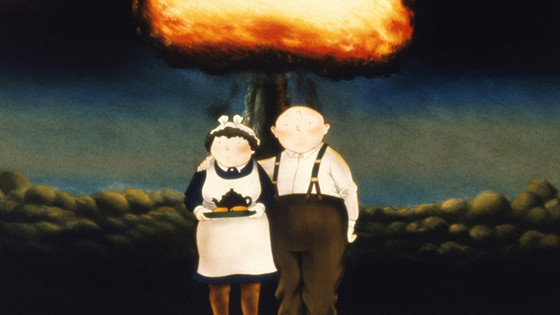As he approached his death, Akira Kurosawa explained how the Hiroshima bombing led to the Cold War by stating, “happiness will never be possible given such origins”. The end of the World War II changed world history forever, and made everyone question about humanity, science and society on our planet. Many of these questions came from philosophers, politicians and artists, and it quickly became one the most interesting themes in cinema.
In this list, we can find many different takes on the issue. We have Cold War films made showing tension between the two main world powers, we have supossitions of what could happen if these tensions explode, we have depictions of the only atomic bomb ever dropped, and we have philiosophical films that question the human condition.
The British fear, the American propaganda, the Hiroshima victims and the always profound questions of Alain Resnais and Andrei Tarkovsky were undercurrents in these films. Atomic war changed humanity forever, and here we have 12 explorations of the theme on cinema.
12. The Atomic Cafe (Jayne Loader, Kevin Rafferty and Pierce Rafferty, 1982)
“OK Richard, you can keep your way with your anti-radiation suit.”
The Atomic Café stands still as an impressive film. Consisting only of archive footage, the directors didn’t make a single shot to pull out the film. Showing mostly government propaganda of the 40s, 50s and 60s, the result is shocking simply by showing the material on its own. Black humor is injected into these serious issues, and the movie becomes funny considering the kind of propaganda used by United States, with some of the films mocking the Soviet Union in ways that were far from subtle or intelligent.
The communist enemy is depicted as being close to the devil. However, the film follows many of the excesses committed by the media at that time, from pop songs celebrating civilian death in Hiroshima, to videos meant to teach schoolchildren how to avoid an atomic bomb by the “dodge and cover” technique.
This is one of the only comedies on this list, and it shows a very different approach to the issue of nuclear war. But the film is far from not taking nuclear bombs seriously, and instead they show these excesses of propaganda and paranoia as a warning. Released during the Reagan era, the film comes during a timeframe when the American government started to place nuclear aggression as a solution.
The warning tells us to not be fooled again, to look with suspicious eyes anything we can see on TV or hear on the radio. At the end, it still counts as one of the more “dead serious” funny movies ever released.
11. A Boy and His Dog (L.Q. Jones, 1975)
A Boy and His Dog may be one of the loveliest films that aren’t completely developed. The low budget for the film can be considered one of its more appealing aspects, but the sound design doesn’t seem completely well done and its misogynist message doesn’t help either.
But despite some of its flawed elements, A Boy and His Dog is one of the most entertaining 70’s sci-fi films. In the film we follow Vic (Don Johnson) and his dog Blood wandering around the fields of a post-nuclear world. Vic can communicate fluidly with Blood through telepathy, and they help each other find their objectives. Vic helps Blood find food, and Blood helps Vic find girls so he can get laid.
There isn’t much background or explanation for the conditions that Vic and Blood have to live in the new world, but Blood makes an important point. There was a World War III and it was similar to the two previous ones, but shortly after there was a World War IV that lasted only four days. In a world where people kill each other for mere cans of food, and where there is more desert than traces of civilization, we can understand a lot of this last World War.
The big difference between the third and fourth wars doesn’t have anything to do with the purposes of war, but with the weapons. In a movie released during the Second Cold War period, it was assumed that the aftermath of a new World War wouldn’t be like the previous one. The version of the film proposes a return to savagery, a bleak version of humanity where survival is the only aim after a nuclear war.
10. Hausu (Nobuhiko Ôbayashi, 1977)
When the Toho studios in Japan wanted to make a film similar to the very popular Jaws (Steven Spielberg, 1975), they consulted Ôbayashi to write a script in that style. They likely didn’t knew that his script consultant would be his pre-teen daughter.
With her help, Ôbayashi pulled out one of the most crazy-viewing experiences ever made, even by the Japanese standards. Hausu mixes surreal elements with horror, stop-motion, cheap effects, romantic drama and childish characters. The film shows Gorgeous (Kimiko Ikegami) planning a summer vacation with her father.
After discovering her father has a new girlfriend that could be her new stepmother, she gets angry and asks her aunt if she can visit her on holidays. When her aunt accepts, Gorgeous and her friends take a train there after school. The aunt (with a very creepy wig) entertains the girls with different tales of lost love and sequels she suffered from the war.
Later, one of the girls goes to pick up some watermelon, but she doesn’t return. When other girl goes to see where she went, she finds her head inside a well. After that, the entire movie transforms into a slasher-style killing spree of the girls, but where the killer is inside the house.
A first review of this plot looks more like a surrealistic-horror film rather than any kind of analysis of nuclear damages. Ôbayashi was born in Hiroshima, and he suffered as a consequence of the war. His father went to fight when he was a child, and his mother raised him. Seeing his mother losing her husband at such an early age was surely one of the main influences to the aunt character.
Of all the genre-blending seen in this film, the most interesting one may come from the aunt’s flashback. Her flashback is filmed in a de-colored photographic style that tries to imitate the aesthetic of mid-war Japanese cinema. This tale has a very small space in the film, but at the end, when the mystery becomes clear, we find that the lost love flashback is what really haunts the house.
Because of this crazy style of filmmaking and mix of elements, Hausu is not often seen as a serious effort, but the key concepts of the film are hidden in some segments. Even if we can hardly see the atomic mushroom in the film (shown for about 1.5 seconds in the flashback scene), it is there, and it is in fact the driving force and real trauma that is eating this girls.
9. I Live In Fear (Akira Kurosawa, 1951)
This hidden gem by Akira Kurosawa shows his frequent collaborator Toshiro Mifune as an elderly factory owner who moved his family from Japan to Brazil to find a safer place to live after the Hiroshima and Nagasaki bombings. However, even if we have Mifune’s character as the motor of the film, Kurosawa tries to give everybody a place to show their opinions and motives.
The sons don’t take their father’s wish seriously, and try to declare him incompetent in front of judges so they can run the factory. Audiences have given negative reactions toward the sons and their greedy attitudes. But in I Live in Fear, it’s hard to say who is totally right or wrong.
One of the most interesting voices in this film comes from another classic Kurosawa actor, Takashi Shimura, who portrays Dr. Harada. While there is clearly some increasing paranoia and madness in Mifune’s character, the reaction and questions of Dr. Harada lead the audience to question these things.
After all, is it really so crazy to try to escape from a country after a nuclear bomb strikes? What’s the big difference between this character and the Europeans escaping to South America before World War I? After all, only three years after the film was released, the Castle Bravo nuclear test from the United States infected a the charge of a Japanese fishing boat, leaving disease in everyone who tried one of the fish.
8. The Sacrifice (Andrei Tarkovsky, 1986)
Perhaps the oddest selection to this list, Tarkovsky’s final film had one of the most interesting approaches to pre-apocalyptic scenery. Alexander (Erland Josephson) goes around discussing and teaching issues to his son. From there, he meets different characters and jumps from familiar issues to philosophical discussions with family and friends.
The first hour goes in a bergmanesque style without a major plot. Later, in a beautifully shot scene (suddenly in black and white), Alexander finds his family perplexed in front of the TV. The news announces an imminent next war that will, inevitably, destroy everything. Some family members burst in tears, while others can’t change their surprised face. Alexander looks at them in horror.
The second half the movie is harder to describe. Tarkovsky, using classical religious themes, shows Alexander looking for something to sacrifice as a way to find hope in the previous stage of the nuclear disaster. Tarkovsky isn’t completely clear in showing what’s going on; we don’t know if this has a link to the atomic bomb, to the Cold War, or as it’s commonly stated throughout the film, the upcoming World War III.
We just know that the world is going to end, and Alexander goes through a spiritual journey to find an answer. With all the layers and interpretations through the film, it’s clear that the nuclear issue is not necessarily the main theme. But there are key moments where Tarkovsky shows why the nuclear bomb is reason to look back at the human condition.
When Alexander’s son, near the end of the film, asks (in his first and only line in the film), “In the beginning was the word… why is that, Papa?” we find one of the most profound deliveries made about the war and human condition on film.
7. When the Wind Blows (Jimmy Murakami, 1986)
The first animated feature of this list is considered an animated classic for many reasons. The soundtrack by Roger Waters (with songs by David Bowie and Genesis), the blending of traditionally drawn animation and stop-motion, and above everything, the uncommon bleakness from a British animated film. An elderly retired couple closely follows news concerning the Cold War between the United States and the Soviet Union.
With this on their minds, they start to build a shelter, something dismissed as a serious issue by their son Ron. We can trace some resemblance to I Live In Fear, but in this case, the bomb actually comes. The second half is as bleak and desperate as a film can get. They try to survive among the ruins of their home, and they start suffering the consequences of radiation.
This film is very direct with its message, and the anti-war spirit throughout is very clear. But the greatest value of the film goes on to express who has to suffer through this. Even if the elderly couple feels some disgust against the Soviet Union, in their weakest moment they start to hallucinate and to confuse the Soviet enemies with the Nazis from the past. They hate their enemy and they can die to defend their country against them, but they aren’t really sure who the enemy is.
The Soviet-Nazi parallel from the film is linked because of the British viewpoint, not for their characteristics. They are the ones we have to destroy, but why? When the Wind Blows is a tender and moving film that shows how animation, oddly enough, can be one of the best channels to express difficult issues.
